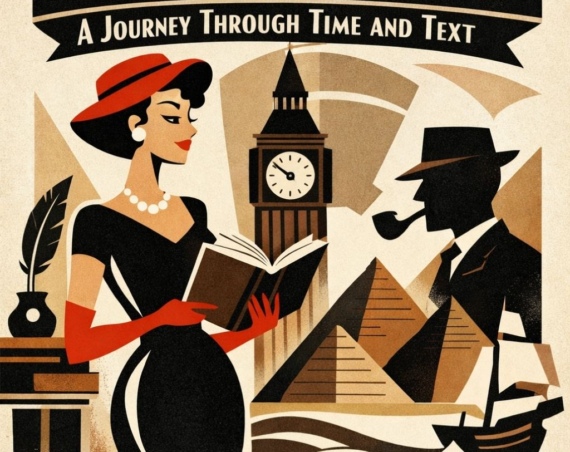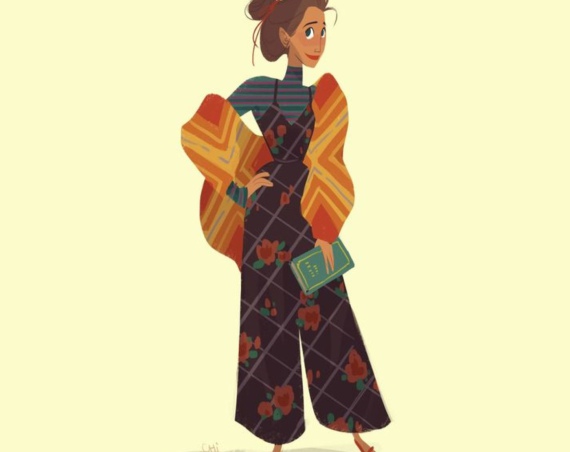Have you ever read a story that seemed realistic, but also had some elements of fantasy or magic? If so, you might have encountered a genre called magical realism. Magical realism is a style of literary fiction and art that is characterized by the matter-of-fact inclusion of fantastic or mythical elements into seemingly realistic fiction. It paints a realistic view of the world while also blurring the lines between fantasy and reality. The focus isn’t on the fantastical elements of the story, but on what they mean for the characters. The magic and the ordinary are so closely intertwined that you can’t quite tell where one ends and the other begins. The heroes are ordinary people whose lives happen to butt up against the extraordinary.
Magical realism is a common feature of Latin-American literature, but it can also be found in the literature of many cultures and ages. Sometimes, the magic in magical realism is left to the reader’s interpretation. In this blog post, we will explore the history, characteristics, and examples of magical realism in fiction, and give some tips for writers who want to try this genre.
The History of Magical Realism
The term “magischer realismus,” which translates to “magic realism,” was first used in 1925 by German art critic Franz Roh in his book Nach Expressionismus: Magischer Realismus (After Expressionism: Magical Realism). He used the term to describe the “Neue Sachlichkeit,” or New Objectivity, a style of painting that was popular in Germany at the time that was an alternative to the romanticism of expressionism. Roh used the term “magischer realismus” to emphasize how magical, fantastic, and strange normal objects can appear in the real world when you stop and look at them.
The genre was growing in popularity in South America when Nach Expressionismus: Magischer Realismus was translated into Spanish in 1927. During a stay in Paris, French-Russian Cuban writer Alejo Carpentier was influenced by magic realism. He further developed Roh’s concept into what he called “marvelous realism,” a distinction he felt applied to Latin America as a whole.
In 1955, literary critic Angel Flores coined the term “magical realism” (as opposed to “magic realism”) in English in an essay, stating that it combines elements of magic realism and marvelous realism. He named Argentine author Jorge Luis Borges the first magical realist, based on his previously-published collection of short stories Historia Universal de la Infamia (A Universal History of Infamy).
While Latin American authors made magical realism what it is today, authors had previously written stories about mundane situations with fantastical elements before magical realism was a recognized literary genre. For example, Franz Kafka’s The Metamorphosis —a novel with themes that today’s critics would consider to be magical realism—was published in 1915, a decade before Roh wrote about magic realism and well before the genre emerged in Latin American literature.
The Characteristics of Magical Realism
Every magical realism novel is different, but there are certain things they all include, such as:
- A realistic setting. Magical realism stories are set in the real world, often in a specific time and place that can be recognized by the reader. The setting can be historical or contemporary, urban or rural, but it is not a fantasy world.
- A blend of ordinary and extraordinary. Magical realism stories mix realistic and fantastical elements without drawing attention to their contrast. The characters and the narrator accept the magic as normal and do not question its logic or origin. The magic can be subtle or obvious, but it is always integrated into the everyday life of the characters.
- A rich symbolism. Magical realism stories use magic as a way to explore deeper themes and meanings that go beyond the surface level of the plot. The magic can represent cultural, political, psychological, or spiritual aspects of the characters or their society. The magic can also challenge or subvert the dominant views or values of the setting.
- A multiple perspective. Magical realism stories often use multiple narrators or points of view to show different aspects of reality. The narrators can be unreliable or contradictory, creating ambiguity and uncertainty for the reader. The narrators can also have different cultural backgrounds or beliefs, reflecting the diversity and complexity of reality.
Some Examples of Magical Realism
Here are some examples of novels that are considered to be magical realism:
- One Hundred Years of Solitude by Gabriel García Márquez. This is one of the most famous and influential works of magical realism, and it tells the saga of seven generations of the Buendía family in the fictional town of Macondo, Colombia. The novel blends historical events with mythical elements, such as flying carpets, ghosts, prophecies, and a plague of insomnia.
- The House of the Spirits by Isabel Allende. This is another family saga that spans four generations of the Trueba family in Chile. The novel depicts the social and political changes in the country, as well as the supernatural abilities of some of the characters, such as clairvoyance, telekinesis, and communication with the dead.
- Midnight’s Children by Salman Rushdie. This is a novel that mixes history and fantasy, as it follows the lives of the children born at midnight on August 15, 1947, the moment of India’s independence. These children have special powers, such as telepathy, shape-shifting, and time travel, and they are linked by a common destiny.
- Beloved by Toni Morrison. This is a novel that deals with the legacy of slavery and racism in America, as it tells the story of Sethe, a former slave who escaped to Ohio with her children. The novel features the haunting presence of Beloved, the ghost of Sethe’s daughter who died at her hands.
- The Wind-Up Bird Chronicle by Haruki Murakami. This is a novel that follows Toru Okada, a man who searches for his missing wife and cat in Tokyo. The novel involves elements of surrealism, such as a well that leads to another world, a psychic prostitute, and a mysterious war veteran.
Some Tips for Writers
If you want to write your own magical realism story, here are some tips to help you:
- Do your research. If you are writing about a specific time or place, make sure you know the historical and cultural details that will make your setting realistic and believable. You can also draw inspiration from myths, legends, folklore, or other sources of magic from your chosen setting.
- Be consistent. If you are creating your own magic system or rules, make sure they are clear and logical, and that you follow them throughout your story. Don’t introduce magic randomly or arbitrarily, but make it an integral part of your plot and characters.
- Be subtle. Don’t over-explain or justify your magic, but let it speak for itself. Don’t make your magic too flashy or obvious, but rather use it to create a sense of wonder and mystery. Let your readers fill in the gaps with their own imagination.
- Be meaningful. Don’t use magic just for the sake of it, but make it serve a purpose in your story. Think about what your magic represents or symbolizes, and how it relates to the themes or messages you want to convey. Use your magic to challenge or enrich your reality.
I hope this blog post has given you some insight into magical realism in fiction, and some ideas for your own writing. If you have any questions or comments, feel free to leave them below. Happy reading and writing!




